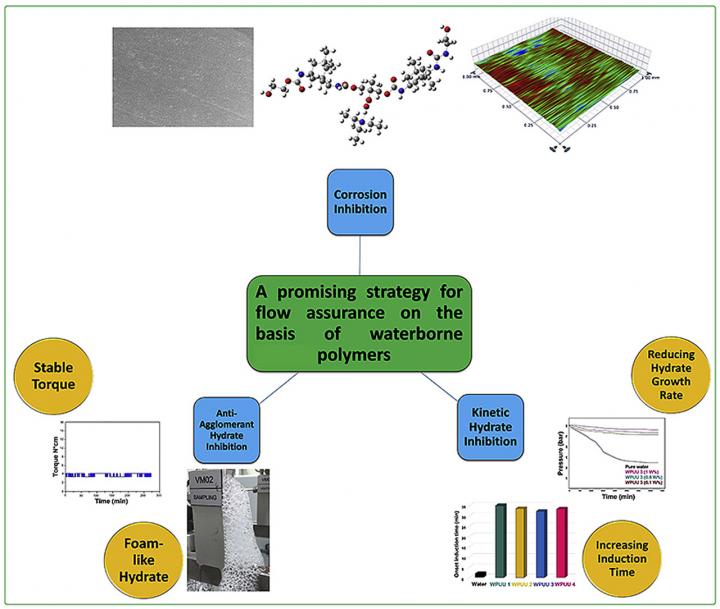A paper appeared in Journal of Natural Gas Science and Engineering.

Credit: Kazan Federal University
Previously, KFU scientists were able to develop the first inhibitors based on castor oil and chitosan. Researchers came up with the idea to create them to solve at least two tasks: ensure efficient production and transportation of hydrocarbons, as well as reduce environmental risks. Now a series of inhibitors has appeared with new reagents based on water-soluble polyurethanes.
“We are looking for new ways to obtain complex reagents – so that one molecule can solve two problems simultaneously. New reagents, as well as those developed by us earlier, effectively inhibit corrosion and hydrate formation. We developed them using urethane technology. This synthesis was carried out in an aqueous medium, which allowed us to obtain water-soluble polyurethanes that can be utilized quite easily,” explains Mikhail Varfolomeev, Head of EcoOil Research Unit at the University.
“This reagent has shown high efficiency in the inhibition of hydrates, both in dynamic conditions of pipeline transport and in static conditions. In addition, detailed studies of the new reagent for corrosion inhibition were carried out, and methods of microscopy and electrochemical analysis were used. All of them showed that this reagent forms a protective layer on the metal surface, which prevents corrosion,” elaborates co-author Abdolreza Farhadian, Research Associate of the Rheological and Thermochemical Research Lab.
Corrosion and the formation of gas hydrate plugs in offshore oil and gas pipelines pose vital risks to operation and safety. As oil and gas exploration and production moves to deeper deposits and longer pipelines, the costs associated with hydrate blocking will increase significantly.
“The idea is that with the help of our inhibitor you can change the situation with the use of reagents. So far, it is customary to use different inhibitors to eliminate problems with corrosion and gas hydrate plugs, and inhibitors can significantly impair each other’s effectiveness. Unlike existing inhibitors, our reagent, in the form of only one molecule, is able to perform these functions. This can qualitatively change the general strategies for applying and solving these problems,” adds another co-author Arman Kudbanov.
###
The project is supported by the Russian Foundation for Basic Research, grant number 18-05-70121.
The paper was made available online in March 2020 and will appear in print in May 2020.
Media Contact
Yury Nurmeev
[email protected]
Original Source
https:/
Related Journal Article
http://dx.




